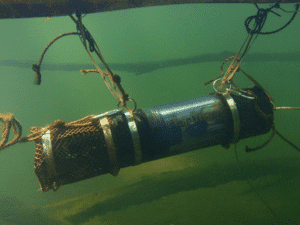
Monitoring data collected before, during, and after remediation provide an objective basis for evaluating remedy performance and effectiveness. Monitoring data are used for gauging progress towards meeting the RAOs and determining whether further remediation or a change to the current remedy is required.
Type of Monitoring
Three basic types of monitoring related to sediment remediation are discussed in this chapter:
Baseline: Baseline monitoring is performed prior to a remedial action during the remedial investigation and pre-design studies to assess the conditions at the site prior to determining the need for either sediment removal or in-situ treatment and the limits of the proposed action, respectively.
Remedial Action: Remedial construction monitoring typically occurs during or immediately following implementation of the remedy and indicates whether the remedy has achieved design criteria (such as specifications for cap thickness, dredging depth, turbidity limits, sedimentation rates, water quality criteria, and perhaps resuspension levels).
Post-remediation: Post-remediation monitoring (sometimes referred to as long-term monitoring) takes place following implementation of the remedy and continues until the remedy has met the established project goals.
Planning the Monitoring Program
When planning a sediment remediation monitoring program, the conceptual site model (CSM) should be periodically revisited and updated.
Previous contaminant sources, pathway, and receptor elements may change upon implementation of the remedy if differing site conditions are encountered during the remedial construction.
The monitoring plan should include contingencies and be flexible enough to adapt to changing circumstances.
The monitoring program should be designed using results from site characterization and pre-design studies to address site-specific considerations.
- Establish monitoring program objectives, questions, decision points and time frames
- Determine measures needed to satisfy monitoring program objectives
- Define sampling units and monitoring boundaries
- Specify how measurements will be used to satisfy the objectives
- Specify designed level of certainty
- Design the monitoring program
Source: ITRC
Coordinator: EnvGuide Team